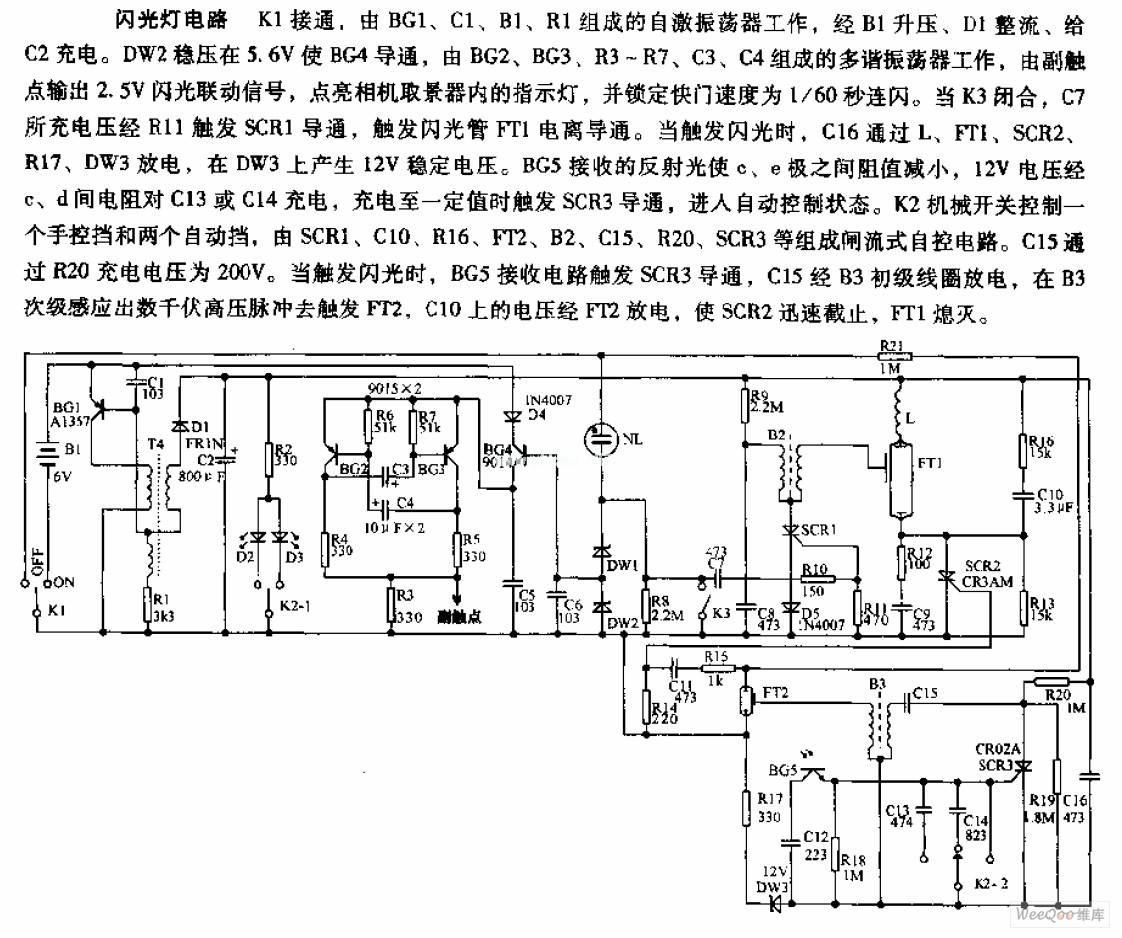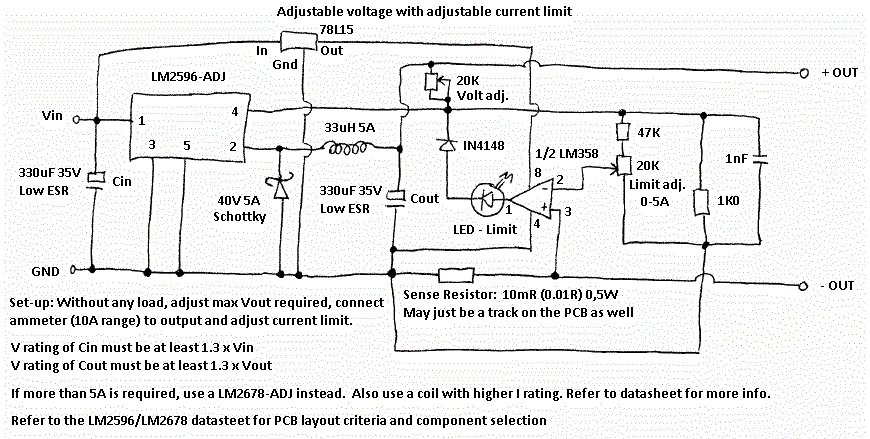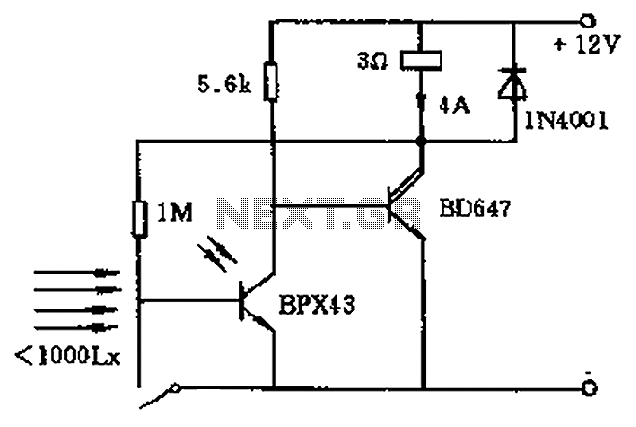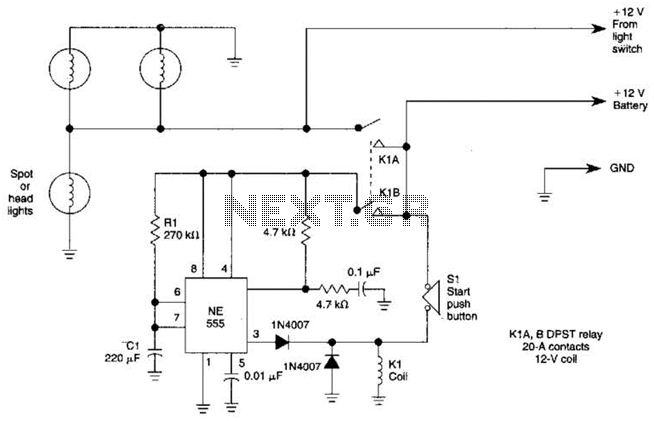
The camera flashlight circuit

The camera flashlight circuit activates when switch K1 is engaged. This triggers a self-oscillating circuit consisting of BG1, capacitor C1, battery B1, and resistor R1. Once operational, the circuit boosts the voltage through B1 and rectifies it using diode D1 to charge capacitor C2. Diode DW2 conducts at 5.6V, allowing transistor BG4 to operate. Subsequently, a multi-resonance oscillator composed of transistors BG2 and BG3, along with resistors R3 to R7 and capacitors C3 and C4, is initiated, generating a 2.5V flash signal.
The camera flashlight circuit is designed to provide a reliable illumination source for photography applications. The operation begins with the closure of switch K1, which engages the self-oscillating circuit. This circuit is essential for generating a high-frequency signal, which is facilitated by the components BG1 (a transistor), C1 (a capacitor), B1 (a battery), and R1 (a resistor). The oscillator's output is then amplified by the battery B1 and converted to a usable form through diode D1, which rectifies the AC signal to charge capacitor C2.
Once C2 is sufficiently charged, diode DW2 plays a critical role by allowing current to flow when the voltage reaches 5.6V. This action activates transistor BG4, which is pivotal for the subsequent multi-resonance oscillator stage. The multi-resonance oscillator is composed of transistors BG2 and BG3, along with a network of resistors (R3 to R7) and capacitors (C3 and C4). This configuration is designed to produce a stable and consistent flash signal of 2.5V, which is crucial for the flashlight's operation.
The overall design ensures that the circuit can efficiently convert stored energy into a powerful flash, making it suitable for various lighting conditions in photography. The use of multiple oscillators and rectification stages enhances the reliability and performance of the flashlight circuit, ensuring that it meets the demands of high-speed photography and low-light environments.The camera flashlight circuit when K1 is put through, the self-motivation oscillator composing of BG1, C1, B1 and R1 is starting to work, after being boosted by B1 and rectified by D1, it is charging C2. DW2 makes BG4 conduct when it is 5.6v, the multi-resonance oscillator composed of BG2, BG3, R3~R7, C3 and C4 is getting into working, the 2.5V flash signal..
🔗 External reference
The camera flashlight circuit is designed to provide a reliable illumination source for photography applications. The operation begins with the closure of switch K1, which engages the self-oscillating circuit. This circuit is essential for generating a high-frequency signal, which is facilitated by the components BG1 (a transistor), C1 (a capacitor), B1 (a battery), and R1 (a resistor). The oscillator's output is then amplified by the battery B1 and converted to a usable form through diode D1, which rectifies the AC signal to charge capacitor C2.
Once C2 is sufficiently charged, diode DW2 plays a critical role by allowing current to flow when the voltage reaches 5.6V. This action activates transistor BG4, which is pivotal for the subsequent multi-resonance oscillator stage. The multi-resonance oscillator is composed of transistors BG2 and BG3, along with a network of resistors (R3 to R7) and capacitors (C3 and C4). This configuration is designed to produce a stable and consistent flash signal of 2.5V, which is crucial for the flashlight's operation.
The overall design ensures that the circuit can efficiently convert stored energy into a powerful flash, making it suitable for various lighting conditions in photography. The use of multiple oscillators and rectification stages enhances the reliability and performance of the flashlight circuit, ensuring that it meets the demands of high-speed photography and low-light environments.The camera flashlight circuit when K1 is put through, the self-motivation oscillator composing of BG1, C1, B1 and R1 is starting to work, after being boosted by B1 and rectified by D1, it is charging C2. DW2 makes BG4 conduct when it is 5.6v, the multi-resonance oscillator composed of BG2, BG3, R3~R7, C3 and C4 is getting into working, the 2.5V flash signal..
🔗 External reference





